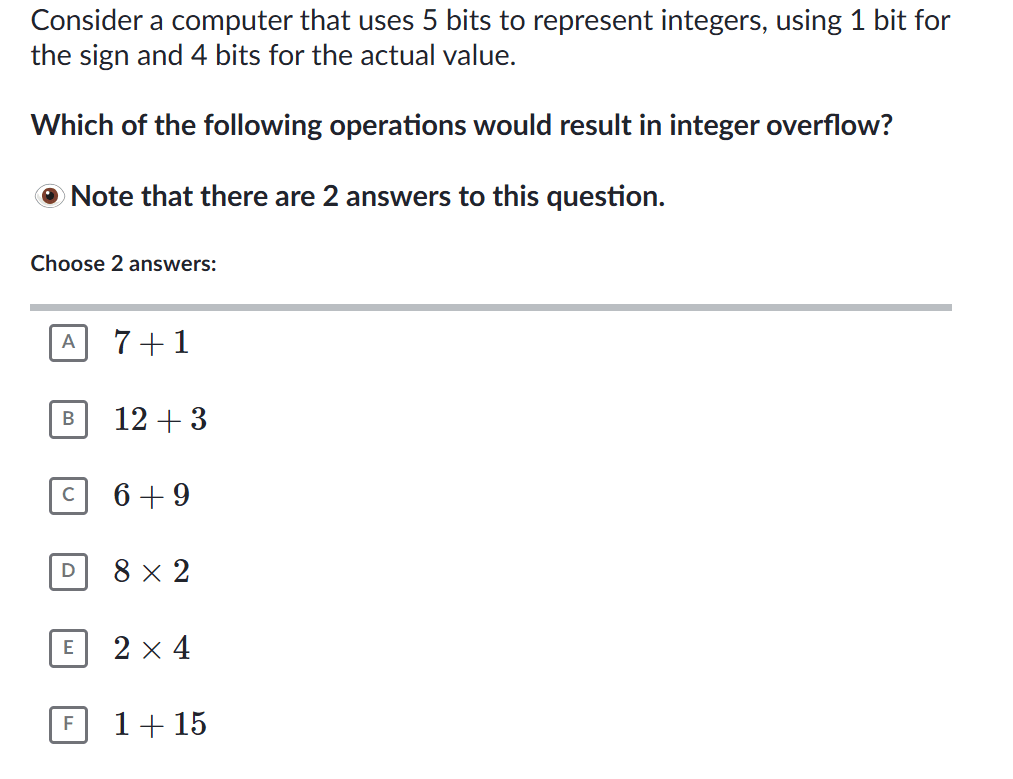
Sia

Question
Computer Science
Posted over 1 year ago
Consider a computer that uses 5 bits to represent integers, using 1 bit for
the sign and 4 bits for the actual value.
Which of the following operations would result in integer overflow?
Note that there are 2 answers to this question.
Choose 2 answers:
A 7+1
B
12 +3
C
6 + 9
D
8 x 2
E
2 X 4
F
1 + 15

Answer from Sia
Posted over 1 year ago
Explanation
Integer overflow occurs when an arithmetic operation results in a value that exceeds the maximum or minimum value that can be represented within the given number of bits. In this case, the computer uses 5 bits to represent integers, with 1 bit for the sign and 4 bits for the actual value.
Step-by-step Instruction
▪
The range is from -8 to 7
▪
Evaluate each operation to see if the result falls outside this range
▪
Identify the operations that result in values outside the range of -8 to 7
Let's evaluate each operation:
1. 7 + 1
- 7 + 1 = 8
- 8 is outside the range of -8 to 7.
- This results in integer overflow.
2. 12 + 3
- 12 + 3 = 15
- 15 is outside the range of -8 to 7.
- This results in integer overflow.
3. 6 + 9
- 6 + 9 = 15
- 15 is outside the range of -8 to 7.
- This results in integer overflow.
4. 8 x 2
- 8 * 2 = 16
- 16 is outside the range of -8 to 7.
- This results in integer overflow.
5. 2 x 4
- 2 * 4 = 8
- 8 is outside the range of -8 to 7.
- This results in integer overflow.
6. 1 + 15
- 1 + 15 = 16
- 16 is outside the range of -8 to 7.
- This results in integer overflow.Time Complexity
The time complexity for evaluating each operation is O(1) since each arithmetic operation is a constant-time operation.
Space Complexity
The space complexity is O(1) as no additional space is required beyond the input values.
Based on the above evaluation, the operations that result in integer overflow are:
- 7 + 1
- 12 + 3Not the question you are looking for? Ask here!
Enter question by text
Enter question by image
Unlock Smarter Learning with AskSia Super!
Join Super, our all-in-one AI solution that can greatly improve your learning efficiency.
30% higher accuracy than GPT-4o
Entire learning journey support
The most student-friendly features
Study Other Question